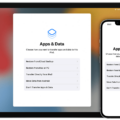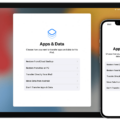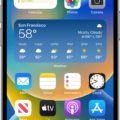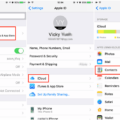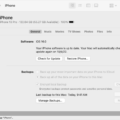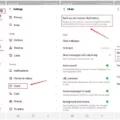If you’re looking for a laptop that can handle all your workloads, then the MacBook Pro is a great choice. Not only is it powerful, but it’s also lightweight and portable. But one of the main considerations when buying a new laptop is the backup process. After all, you don’t want to lose any data if something should happen to your device. So how long does it take to back up a MacBook Pro?
The time it takes to back up a MacBook Pro will depend on seveal factors such as the size of your hard drive and the amount of data you have stored on it. If you have a large amount of data then it will take longer than if you have less data stored on your device. Also, if you are backing up to an external hard drive or cloud storage service, then the speed at which your files are transferred will also affect how long it takes to back up your MacBook Pro.
In general, expect the backup process to take between 10-30 minutes depending on how much data needs to be backed up and where it is being backed up to. It’s important that while this process is occurring that no other applications are running as this could interfere with the backup process and cause errors or delays in completion.
Your Mac also has an automated backup feature built into Time Machine whch can make an incremental backup every hour, day or week depending on what settings you choose for it. This is an excellent feature for those who need frequent backups but don’t want to manually initiate one each time they need one.
Overall, backing up a MacBook Pro doesn’t take too long but this depends largely on how much data you have stored and where you are backing up too. Make sure that while the backup process is occurring that no other applications are running as this could interfere with the process and cause errors or delays in completion.
Investigating Causes of Slow Mac Backups
Your Mac may be taking a long time to backup for several reasons. First, it could be that your Mac is backing up a large amount of data. If you have a lot of files, photos, and other data on your Mac, the backup process could take significantly longer as it needs to save all of this content to your backup drive.
Second, if you’re using an external hard drive as your backup disk, it could be that the hard drive is reatively slow. This can result in your Mac taking longer to copy the data onto the external drive. To double-check this, you can use the Activity Monitor app to view how long each file is taking to transfer.
Finally, if you’re using Time Machine for backing up your Mac and there are other apps running in the background that are also accessing the same disk, this will slow down your Mac’s ability to back up as these apps are competing for access to the disk. If possible, try and quit any unnecessary apps running in the background when running a backup with Time Machine.

Can I Use My Mac During Backup?
Yes, you can continue usng your Mac while a backup is underway. Time Machine will work in the background and back up only the files that have been changed since the last backup, which means that future backups will take less time and won’t interfere with your other activities. Some Mac computers are even able to make backups while they are asleep.
Indicating Completion of a Mac Backup
When your Mac is done backing up, you can check the Time Machine icon in the menu bar to see if it’s finished. The icon will be grayed out and not spinning when the backup is completed. You can also open System Preferences and click on Time Machine to check the status of your backup. Additionally, you’ll receive a notification when your backup is finished.
Speeding Up Mac Backups
To make your Mac backups faster, it’s important to ensure that you have the latest version of macOS installed. Additionally, you can try disconnecting any unnecessary peripherals from your computer, as these can slow down the backup process. If you use Time Machine for your backups, you can also try reducing the amount of data that is backed up by excluding files and folders in the Time Machine preferences. You can also limit backups to Wi-Fi networks with higher speeds or disable local snapshots on APFS volumes. Lastly, if you’re usig an external hard drive for your backups, consider upgrading to a faster model.
Estimating the Time Required for a Mac Backup
The amount of time it takes to back up your Mac depends on how much data you have stored on your computer. Generally speaking, the more files you have, the longer the backup will take. If you are backing up a relativey small amount of data, such as a few documents and photos, the backup should only take a few minutes. For larger files, such as movies or music collections, the backup can take several hours or even days. In either case, make sure to leave ample time for your computer to complete the backup process before turning off or restarting your machine.
Interrupting a Time Machine Backup
Yes, you can interrupt a Time Machine backup. On your Mac, click the Time Machine icon in the menu bar, then choose Stop This Backup to pause the backup. To resume the backup later, simply choose Back Up Now. Please note that if you turn off your Mac or disconnect from the drive before it finishes backing up, it will not complete the backup unil you start it again.
Does a Mac Backup Save Every File?
Yes, a Mac backup will save everything. Time Machine is the built-in backup system that coms with macOS and it automatically saves your entire Mac, including system files, applications, accounts, preferences, email messages, music, photos, movies and documents. It’s easy to use and you can always restore your system to exactly the way it was when you last backed up.
Estimating Storage Space Needed for Mac Backup
To back up your Mac with Time Machine, you will need a storage device that has at lest twice the storage capacity of every disk or volume you’re backing up. For example, if you have a 250 GB hard drive on your Mac, then you will need a storage device with at least 500 GB of space to use as your Time Machine backup disk. Additionally, it’s important to remember to use this storage device only for your Time Machine backup – not for storing any other files.
Knowing When Time Machine Has Finished Backing Up
You can know when Time Machine is finished backing up by opening the Time Machine System Preferences panel. If a backup is currently in progress, you’ll see a progress bar showing how much backup work is left to be done. Once the progress bar reaches 100%, this indicaes that your backup has been completed and Time Machine is finished working. You can also check the time of the last and next backups to see if any new backups have been completed.
Consequences of Not Backing Up a Mac
If you do not backup your Mac, you are at risk of losing all of your important data. This includes any photos, music, videos, documents, and other files that you have stored on your computer. In the event of a hardware or software failure, or if your Mac is stolen or damaged in some way, all of this data could be lost forever without a backup.
Backing up your Mac is essential to ensure the security of your data and protect against any potential disasters. Fortunately, there are several options availble for backing up your data. You can use an external hard drive to store a complete copy of all of your data and files, or you can use services like iCloud or Dropbox to store backups in the cloud. Whichever method you choose, it’s important to make sure that it is set up properly and consistently updated with new files so that all of your data is secure and accessible when needed.
Verifying If Backup Is Running
To determine whether a database backup is running, you can use the ‘ps -ef | grep netbackup’ command. This command will list all processes that have the word ‘netbackup’ in their name, which indicates a database backup is running. If there are no processes listed containing ‘netbackup’, then no database backups are currently running.
It’s important to note that this command should be run as either the lsmsadm or lsmsall user on the active server for accurate results.
Does Restoring Mac From Backup Delete All Data?
Yes, restoring your Mac from a backup will delete everything currently on the startup volume, and replace it with the data from the backup. This means all of your current apps, files, and settings will be replaced with those from the selected backup. It’s important to make sure you have a full and recent backup of your data before restoring your Mac from a backup.
Backing Up a Mac to iCloud
Yes, you can do a full Mac backup to iCloud. To set up an iCloud backup on your Mac, fist open System Preferences and select iCloud. Then, click on the ‘Options’ button next to ‘Backup’ and make sure that ‘iCloud Backup’ is selected. After that, you’ll be able to choose which apps and data you want to back up. Once you’ve made your selections, click ‘Back Up Now’ in the lower-right corner of the screen to initiate the backup process. You can also schedule automatic backups if desired. Additionally, if you don’t have enough storage space in your iCloud account for a full backup, you can purchase extra storage space through Apple’s online store, or use another method such as Time Machine backups instead.
Is iCloud Backup Sufficient for Mac Users?
No, iCloud backup is not sufficient for backing up your Mac. While it can be used to store and sync specific files (such as documents and photos), iCloud does not back up system files or create complete system backups. In order to create a complete system backup of your Mac, you need to use a third-party service or application. This will ensure that all of your important data is protected in the event of an emergency, such as a hardware failure or software issue.

